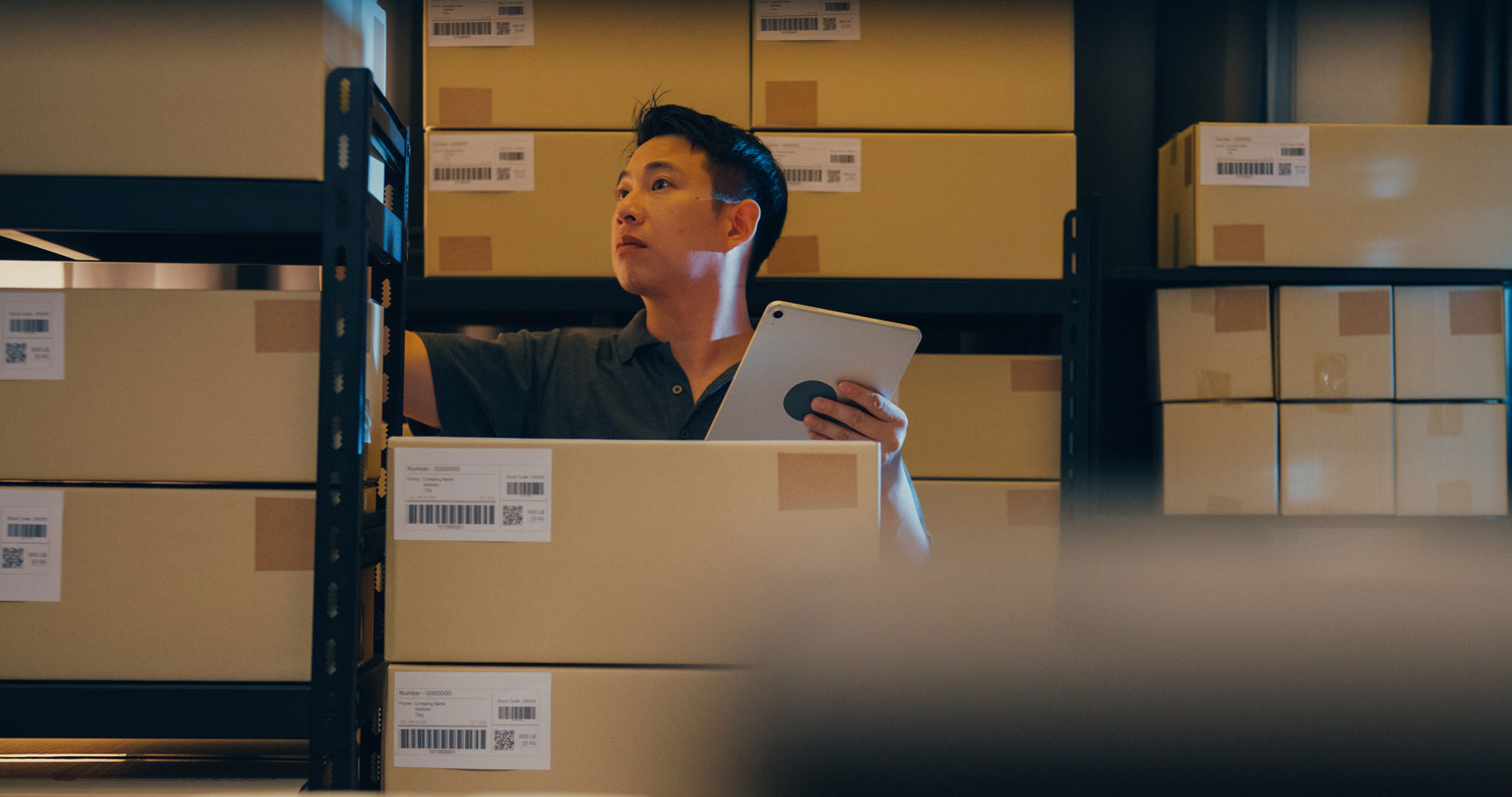The Rise Of Intra-Asia Trade: Opportunities In The China-Southeast Asia Corridor
Emerging trade lanes in Asia present possibilities for businesses of all sizes, particularly APAC SMEs looking for international trade opportunities.
- ASEAN has risen to become China’s top trading partner, and trade between the two regions continues to grow.
- Emerging trade lanes in Asia, such as the China-Southeast Asia corridor, can bolster intra-Asia trade opportunities.
- By taking advantage of free trade agreements in Asia, peak shopping seasons, and reliable logistics providers, SMEs can seize international trade opportunities in the China-Southeast Asia corridor.
The global trade landscape is constantly in flux. Over time, trade lanes and supply routes evolve as economic powerhouses shift and expand. At FedEx, we have a front-row seat to monitor this dynamic transformation. One of the most exciting developments in the last decade is the rapid growth of intra-Asia trade opportunities. Most recently, we’re seeing greater trade activity between China and Southeast Asia.
Since 2020, ASEAN has overtaken the EU as China’s top trading partner – and the trade volume between these two regions continues to surge. In 2023, for example, trade with ASEAN countries made up 15.9% of China’s total foreign trade, with bilateral trade amounting to US$468.8 billion, a 10.5% increase from the previous year.
Emerging trade lanes in Asia offer interesting opportunities for businesses of all sizes, especially if you’re an ASEAN SME eyeing cross-border markets. Many savvy businesses are already setting their sights on regional prospects. Among ASEAN and Greater China businesses venturing overseas, 3 in 5 want to expand to ASEAN, while 1 in 3 aim to focus on Mainland China.
Since 2020, ASEAN has overtaken the EU as China’s top trading partner – and the trade volume between these two regions continues to surge. In 2023, for example, trade with ASEAN countries made up 15.9% of China’s total foreign trade, with bilateral trade amounting to US$468.8 billion, a 10.5% increase from the previous year.
Emerging trade lanes in Asia offer interesting opportunities for businesses of all sizes, especially if you’re an ASEAN SME eyeing cross-border markets. Many savvy businesses are already setting their sights on regional prospects. Among ASEAN and Greater China businesses venturing overseas, 3 in 5 want to expand to ASEAN, while 1 in 3 aim to focus on Mainland China.
What’s driving the China-Southeast Asia trade boom?
At FedEx, we believe in supporting small businesses that want to go beyond borders. Businesses that seek customers in new geographies can reap rewards, taking advantage of the current boom in intra-Asia trade opportunities. While several factors are propelling active trade between China and Southeast Asia, one primary driver is the ongoing shift in global manufacturing.

As global manufacturers seek to diversify supply chains and reduce reliance on any single supply source, Southeast Asia emerges as an attractive manufacturing hub. ASEAN countries like Indonesia, Vietnam, Thailand, and Malaysia offer a winning combination of low labor costs, favorable investment policies, and a growing skilled workforce.
The ongoing implementation of the ASEAN-China Free Trade Area (ACFTA) also encourages intra-Asia trade opportunities by reducing or removing tariffs on certain goods and services. Free trade agreements in Asia help create a more seamless, integrated market, lowering barriers to entry and making it easier for businesses to operate across borders.
Updates to the ACFTA, slated for 2025, will let the China-Southeast Asia supply chain tap into future growth areas in digital and green economies.
The ongoing implementation of the ASEAN-China Free Trade Area (ACFTA) also encourages intra-Asia trade opportunities by reducing or removing tariffs on certain goods and services. Free trade agreements in Asia help create a more seamless, integrated market, lowering barriers to entry and making it easier for businesses to operate across borders.
Updates to the ACFTA, slated for 2025, will let the China-Southeast Asia supply chain tap into future growth areas in digital and green economies.
Opportunities in the China-Southeast Asia trade corridor
The rise of the China-Southeast Asia trade lane is creating possibilities for businesses to expand their reach and tap into new markets.
For example, Southeast Asia’s growing demand for electronics, e-commerce, and other consumer goods spells rich opportunities for Chinese manufacturers and exporters. At the same time, Southeast Asian businesses can benefit from access to China’s vast market and advanced manufacturing capabilities. After all, China is home to the world’s largest consumer market of 1.3 billion people.

As our world transitions to electric vehicles and renewable energy, it’s clear that demand for lithium batteries will continue to skyrocket. Both China and Southeast Asia are emerging as key players in the global lithium battery supply chain. China is already a leader in battery manufacturing, while Southeast Asia is a rich resource for raw materials needed in battery production – a win-win setup for fruitful partnerships.
Amidst the ongoing trend toward decentralized manufacturing, manufacturers are diversifying their operations across China and Southeast Asia. There are many opportunities in the making for businesses that can provide logistics and supply chain solutions to such companies.
Amidst the ongoing trend toward decentralized manufacturing, manufacturers are diversifying their operations across China and Southeast Asia. There are many opportunities in the making for businesses that can provide logistics and supply chain solutions to such companies.
Top 5 business tips for China-Southeast Asia trade
When seizing the possibilities of China-Southeast Asia commerce, what are the most critical considerations for business owners? Here’s a breakdown of the top five:
1. Take advantage of trade deals
The ASEAN-China Free Trade Area (ACFTA) features three agreements aimed at the free flow of goods, services, and investments. If you’re an ASEAN business, you can take advantage of reduced or eliminated tariffs for exports to China.

For example, the ACFTA eliminates tariffs on 94.6% of exports to China from Singapore, safeguarding market access and ensuring a more predictable operating environment for service suppliers.
With 2025 updates to the ACFTA on the way, ASEAN businesses can tap into future growth areas, including digital and green economies. They can also enjoy enhanced rules on supply chain connectivity and consumer protection.
With 2025 updates to the ACFTA on the way, ASEAN businesses can tap into future growth areas, including digital and green economies. They can also enjoy enhanced rules on supply chain connectivity and consumer protection.
2. Study the market and its regulations
While the ACFTA serves as a unified free trade agreement in Asia that eases trade barriers, navigating the complex regulatory environment of doing business across China and Southeast Asia is still no easy feat.
For example, while functioning under the banner of ASEAN, each of the ten member states still has separate governing policies and regulations related to trade and industry, labor, taxation, and consumer protection. It’s important for your business to understand and comply with the diverse regulatory environments in these markets.
3. Account for cultural differences
When doing business in Asia, cultural understanding is the secret ingredient to success. While ASEAN has a shared identity, it’s also a melting pot of different cultures, traditions, and consumer preferences. To succeed in the China-Southeast Asia trade corridor, it helps to appreciate the unique cultural aspects that shape business dynamics in the region.

Local teams at FedEx work hard to understand local customs, traditions, and communication styles, building better rapport with our customers and partners. Appreciating cultural sensitivity builds trust and strengthens relationships, boosting the success of your business ventures.
4. Work with a reliable logistics provider
Efficient logistics and supply chain management are pivotal for cross-border expansion. But if you’re an SME with limited resources, it can be daunting to juggle all the complexities of cross-border trade: managing international shipping, handling customs regulations, ensuring timely delivery, and more.
To succeed in the China-Southeast Asia trade lane, think about teaming up with a logistics provider that has a deep understanding of the region’s unique challenges and opportunities.
By forming strategic partnerships with established logistics providers, or even complementary businesses, APAC SMEs can leverage their expertise and existing networks to streamline operations and expand market reach.
5. Maximize sales during peak seasons
Cultural differences aside, one thing’s certain: Asians love a good bargain. Around 70% of Southeast Asian consumers wait for peak online sales seasons, including Singles’ Day (11.11) and Black Friday, before making a big purchase. In China, Double 11 is the largest retail event of the year, propelling otherwise budget-conscious consumers into a spending spree.

Peak seasons spell big sales, so plan ahead to keep sales flowing while preventing inventory shortages and order delays. Check out more tips on how to prepare for peak seasons here.
Ready to win big in the intra-Asia trade lane?
At FedEx, we’re committed to helping businesses of all sizes take advantage of opportunities in the China-Southeast Asia trade lane, with a strategic presence in both regions.
Recently, we enhanced connectivity between China and Southeast Asia by introducing a new route between Vietnam and China, speeding up delivery by a day to major Asian markets.
We also enhanced our import service, enabling customers in Jakarta, Indonesia to receive inbound shipments from Asia one day earlier on weekdays. In addition, our recently opened regional headquarters in Singapore reaffirms our confidence in the region’s growth potential.
The rise of intra-Asia trade opportunities is a testament to the region’s dynamism and resilience, one that will continue to foster greater trade flows and economic opportunities in the years ahead. There’s no doubt about it: it’s an exciting time to do business in China and Southeast Asia.
***




















 The Latest
The Latest